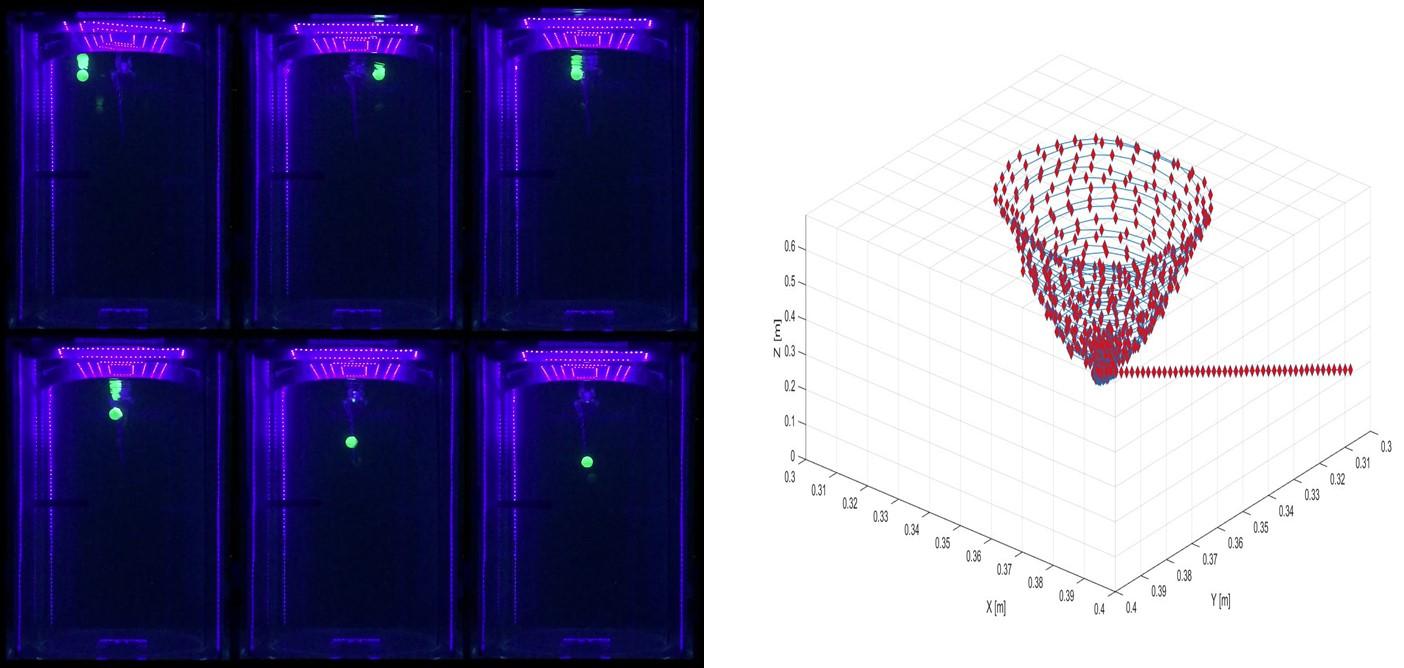Research on the mechanisms to prevent FOG layer formation in wastewater pump sumps
Research objectives
Obtaining knowledge about mechanisms to prevent the formation of FOG layers in wastewater pumping stations. The knowledge is used to propose design recommendations for pump sumps to prevent the formation of FOG layers. This must result in the design of more maintenance friendly pumping stations.
Project outline
Introduction
Wastewater pumping stations can experience problems due to the presence of floating debris in the pump sump. This floating debris mainly consists of solidified fat, grease and oil (hereafter called FOG) and the individual particles can accumulate to a closed floating layer. The presence of FOG can result in pump failures that can result in a 16% increase of yearly volume of combined sewer overflows as shown by Korving et al. (2006) for a specific case. Moreover, the removal of the FOG is an expensive, very unhygienic and labour intensive work and should be minimized.
The current guidelines for sump design (e.g. ANSI/HI (2012)) only deal with the transport of pollution in a superficial manner for a limited number of sump geometries (i.e. trench type and circular sumps). According to the author there is a need for a more generic formulation of design guidelines which provides a balanced compromise between avoiding poor flow conditions and air-entrainment on one hand and avoiding the formation of FOG layers on the other hand. Therefore, the author has started an experimental research on mechanisms to prevent the formation of FOG layers.
Approach
The use of free-surface vortices is defined as a potential mechanism for the transport of FOG particles towards the pump suction inlet. The ability and efficiency of this mechanism is initially qualitatively studied in a real scale test facility (Duinmeijer & Clemens, 2016). Based on this research, an extensive laboratory study is conducted in a Æ600 mm vortex tank, see Figure 1.

A theoretical vortex transport model is developed that predicts the transport ability of a vortex as function of a set of parameters. Next, the practical applicability and efficiency of a free-surface vortex is tested in real wastewater pumping stations that experiences problems with accumulation of FOG layers.
Results
Stereo PIV measurements showed that the vortex downflow is concentrated in a small radial region around the axis of symmetry with a maximum of approx. 10 to 20% of the total inflow. This is important data in understanding the behavior of a particle in the vortex flow. A novel 3D-PTV method is used to record the particle track in the vortex. The recordings of ±600 experiments showed clear relations between particle transport and particle and vortex characteristics.

Scientific relevance
The experimental data from experimental and field research in wastewater pump sumps is considered essential for science-based optimized design of wastewater pumping stations. The experimental research provides insights in the flow phenomena’s in wastewater sumps with respect to the accumulation of individual FOG particles into solid FOG layers and the prevention of FOG layer formation.
Social relevance
Preventing the formation of FOG layers decreases pump failures and therefore increasing the sewer system serviceability. As a result, the yearly volume of CSO spills of raw wastewater into receiving surface water bodies decreases which provides a better environmental health. Also, less pollution of pump sumps significantly decreases the annual costs for sump cleaning and pump failure repair costs.
Literature
- Korving, J.L., Clemens, F.H.L.R., and van Noortwijk, J.M., 2006b. “Statistical Modelling of the Serviceabilitiy of Sewage Pumps”, Journal of Hydraulic Engineering, 2006.132, 1076 - 1085
- American National Hydraulic Standards Institute (2012) American National Standard for rotodynamic pumps for pump intake design. ANSI 9.8-2012. ISBN 978-880952-70-2
- Duinmeijer, S.P.A. and Clemens, F.L.H.R. (2016). “Experimental research on free-surface vortices as transport mechanism in wastewater sumps”. Paper presented at the 8th Int. Conference on Sewer Processes and Networks, Rotterdam, The Netherlands.
- Stelling, G. S. and Duinmeijer, S. P. A. (2003), A staggered conservative scheme for every Froude number in rapidly varied shallow water flows. Int. J. Numer. Meth. Fluids, 43: 1329–1354. doi: 10.1002/fld.537